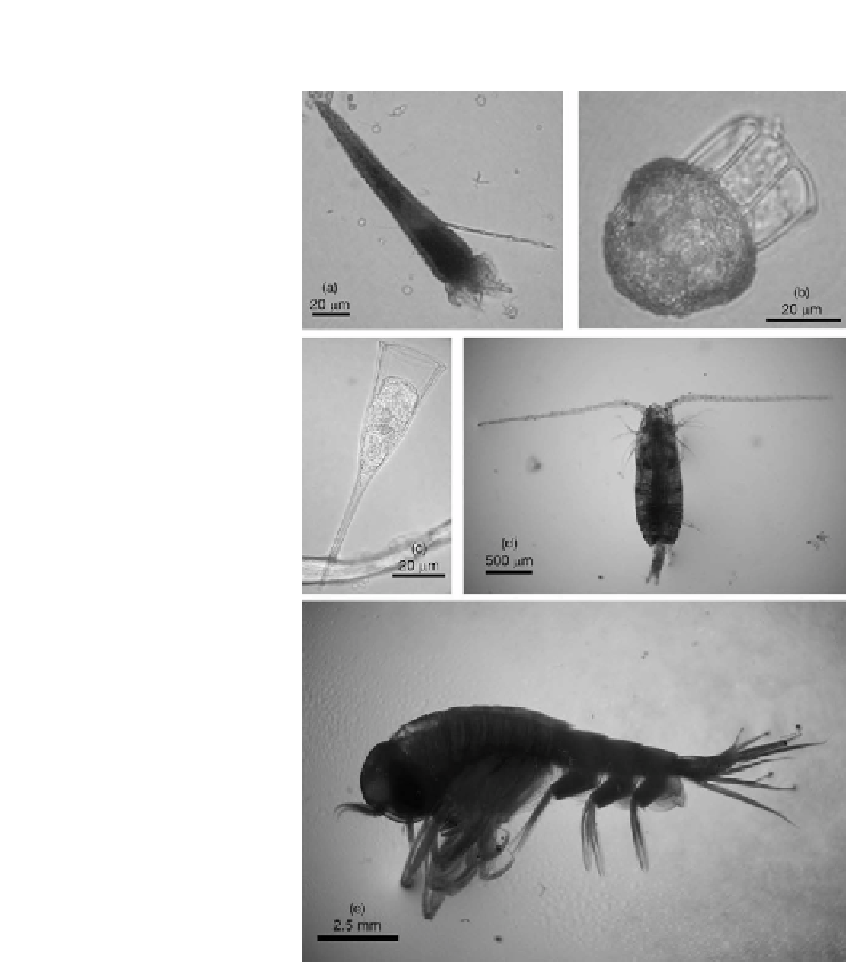Geoscience Reference
In-Depth Information
Figure 5.13
See
colour plates version
.
Some examples of micro- and meso-zooplankton. (a)
naked planktonic ciliate Strombidium; (b) planktonic tintinnid Dictyocysta; (c) planktonic
tintinnid Rhabdonellopsis; (d) a Calanus copepod; (e) planktonic Amphipod. Images supplied
by Alex Poulton (National Oceanography Centre, UK) and Sari Giering (University of
Southampton, UK).
mesozooplankton (which include fish larvae), though as consumers of organic mater-
ial heterotrophs obviously include the fish, marine mammals and ultimately the top
predator of them all, we humans. Our focus on the smaller end of the heterotrophic
size range is predicated on identifying the organisms that are most likely to be at the
mercy of turbulence and flows in the ocean.
Figure 5.13
illustrates a few of the many
diverse many heterotrophic organisms.



Search WWH ::

Custom Search